South-east Queensland (SEQ) has a diverse variety of butterflies and some of the larger and colourful species like the Blue Triangle and Orchard Swallowtail are quite well known. One of the groups of smaller sized butterflies, that are less well recognised, are the ‘blues’ of the family Lycaenidae. There are over 60 species of blues in SEQ that range in size from 14 to 53mm wingspan.
The common name is derived from the fact that most species in this family possess a variable amount of iridescent blue scales on the upper-wings, a lesser number lack the blue scales but have iridescent scales of purple, copper or orange. Despite their small size, many of them rival the beauty of their larger relatives. In particular, the ‘jewels’ (genus Hypochrysops) are stunning!
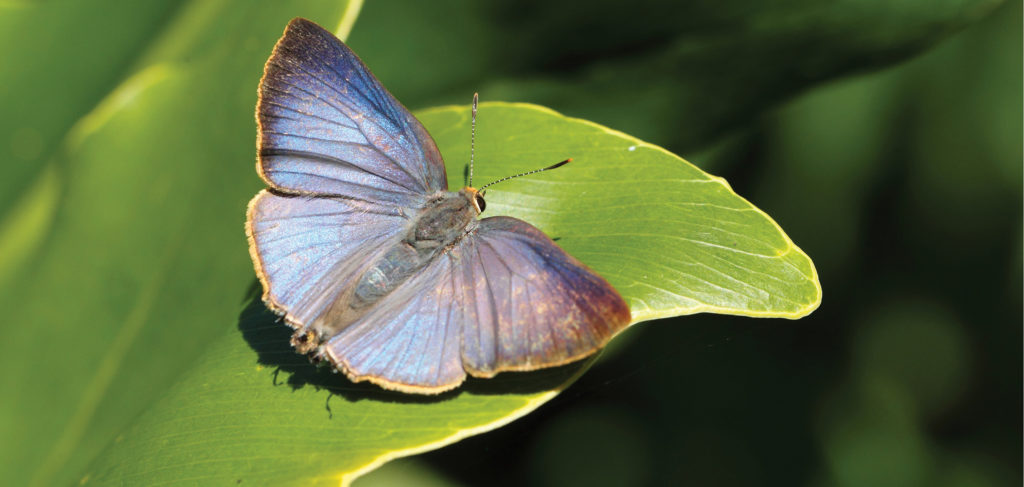
Butterflies are more abundant on the wing through the warmer months, especially with good rain, as these are the conditions in which the host plants are growing and flowering, providing food for butterfly larvae. Some species have a very limited number of larval host plants while others are more generalised and will feed on a wide variety of species. The Plumbago Blue and Cycad Blue are examples of species that have benefited from the widespread planting of their host plants (plumbago and cycads) in gardens.
Butterflies in general have interesting transformative life cycles but many of the blues also have fascinating interactions with ants during their larval stage. In most cases both parties benefit from these associations, the larvae receive protection from predators and parasites and the ants receive sugary and nitrogen-rich food rewards and ‘feel-good’ chemicals from the larvae.
For some blues the relationships with ants are casual and don’t significantly influence survival, but for others like the Imperial Hairstreak, survival is greatly decreased without the ants in constant attendance. These relationships are not always beneficial to the ants though; for example, the threatened Mangrove Ant-blue (Acrodipsas illidgei) spends its larval stage inside an ant nest feeding on the ant larva, chemically suppressing ant aggression.
Small butterflies can be difficult to identify but digital photography combined with good field guides has certainly made this task much easier. Some species of blues are rarely seen and one of the only opportunities to view them is by visiting the tops of mountains where the butterflies gather to find a mate in a phenomenon called ‘hill-topping’. It is an amazing sight to see a large number of butterfly species battling over the best territories.
Knowing the host plants is a good starting point to know where to look for certain species of butterfly. Some butterfly species can be attracted to urban gardens and rural properties that grow host plants. There are several excellent books (see references) that document butterfly host plants for SEQ.
As with most wildlife, blue butterflies benefit from healthy habitats, especially bushland areas with an understorey of native grasses, herbs and shrubs. If you have a photo of a blue butterfly and want to identify it, send your image to your Land for Wildlife Officer and we will try to identify it for you.
Speckled Line-Blue
(Catopyrops florinda)
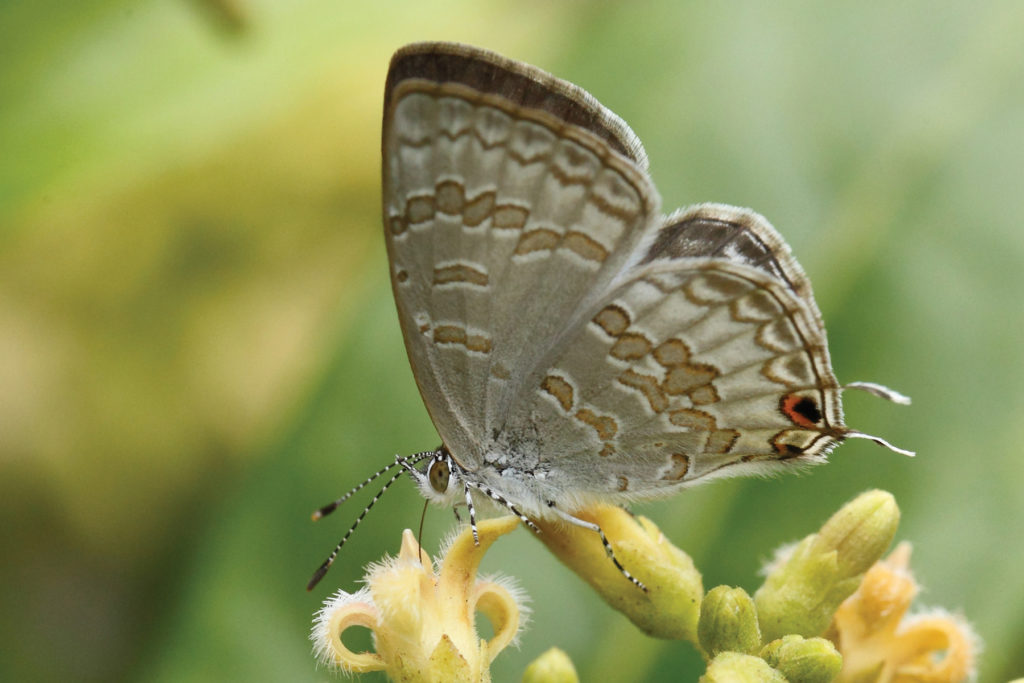
Host plants: Flowers, flower buds and young terminal leaves of Poison Peach (Trema tomentosa), Native Mulberry (Pipturus argenteus), Tulipwood (Harpullia pendula)and Nicker Bean (Caesalpinia bonduc).
Habitat: Usually near rainforests especially in regenerating areas where Native Mulberry and Poison Peach are common pioneer plants.
Shown above from top: An adult female, a larva and pupa with attendant ants.
Common Grass Blue
(Zizina otis)
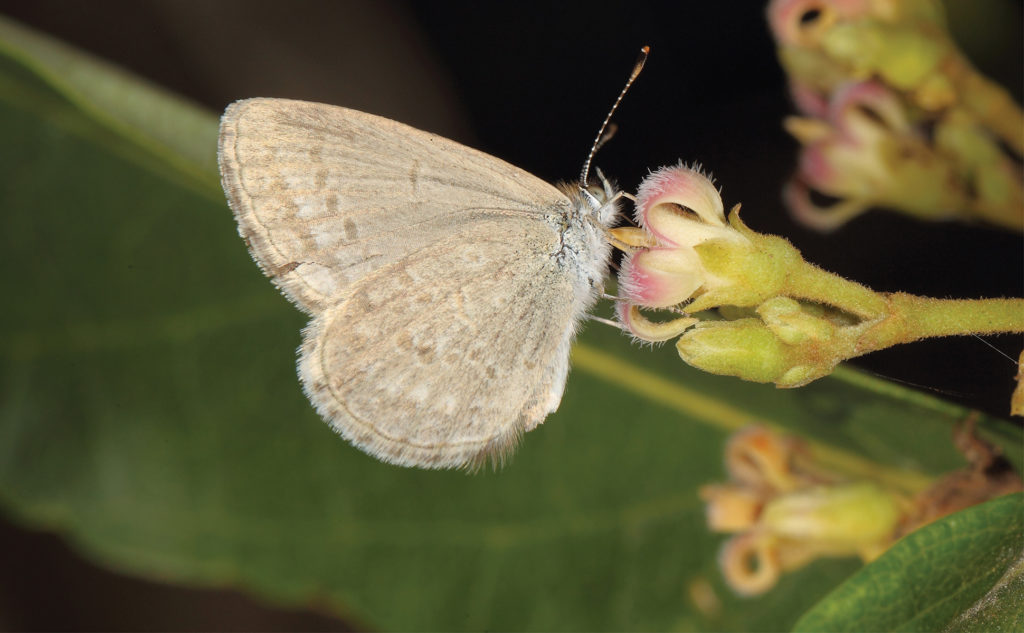
Host plants: Feeds on young leaves, flower buds, flowers and seedpods of a wide variety of native and introduced low-spreading legumes.
Habitat: Open grassy areas such as pastures, sports fields and suburban gardens. Probably the most common blue butterfly in SEQ.
Small Green-banded Blue
(Psychonotis caelius)
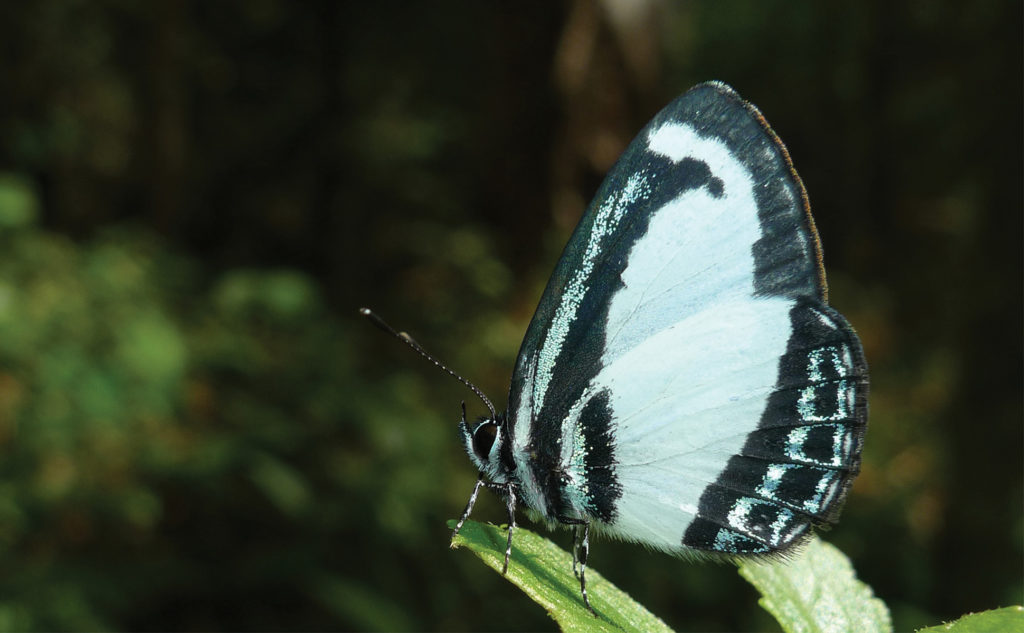
Host plants: Leaves of Red Ash (Alphitonia excelsa)and White Ash (Alphitonia petriei).
Habitat: Wherever the host plants are established, including rainforest, woodlands, suburban parks and gardens.
Plumbago Blue
(Leptotes plinius)
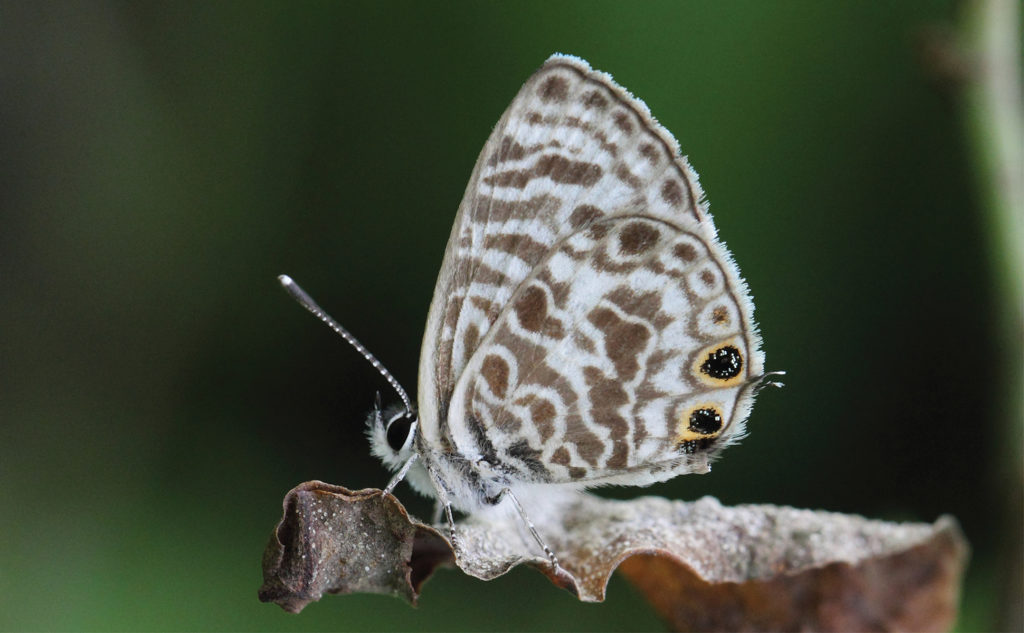
Host plants: Flowers and flower buds of the Native Plumbago (Plumbago zeylanica) and introduced Plumbago (P. auriculata).
Habitat: Open woodland and dry rainforests where the native host plant grows and also in suburban areas where the introduced host plant is often grown as an ornamental.
Hairy Line-Blue
(Erysichton lineata)
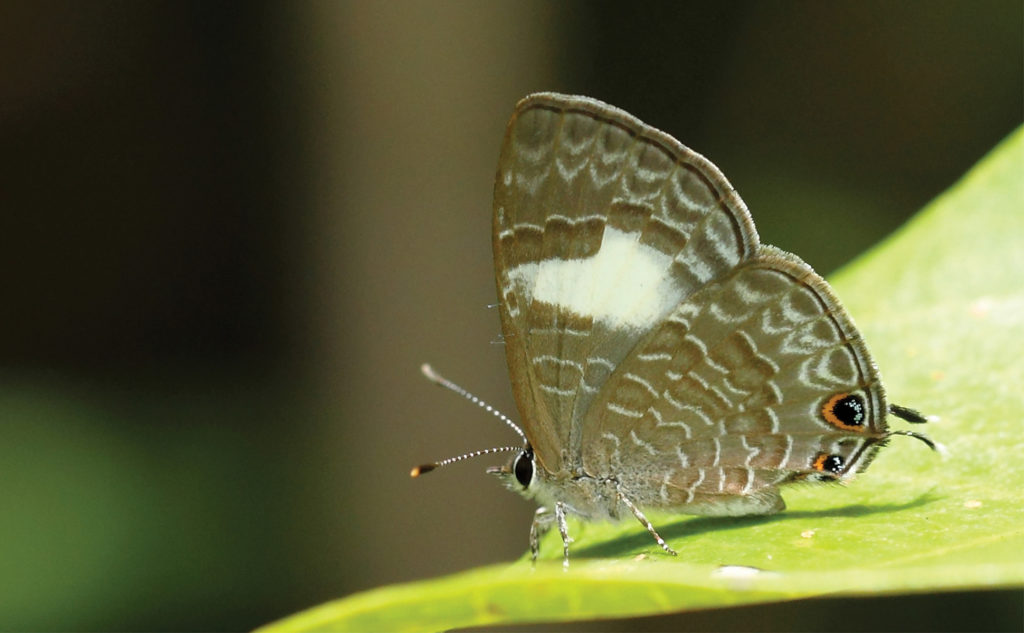
Host plants: Flowers and flower buds of a diverse range of rainforest species from different genera including Syzigium, Macadamia, Alectryon, Cupaniopsis, Harpullia, Jageraand Brachychiton.
Habitat: Edges of rainforest but also within suburban gardens where the host plants are grown.
Imperial Hairstreak
(Jalmenus evagoras)
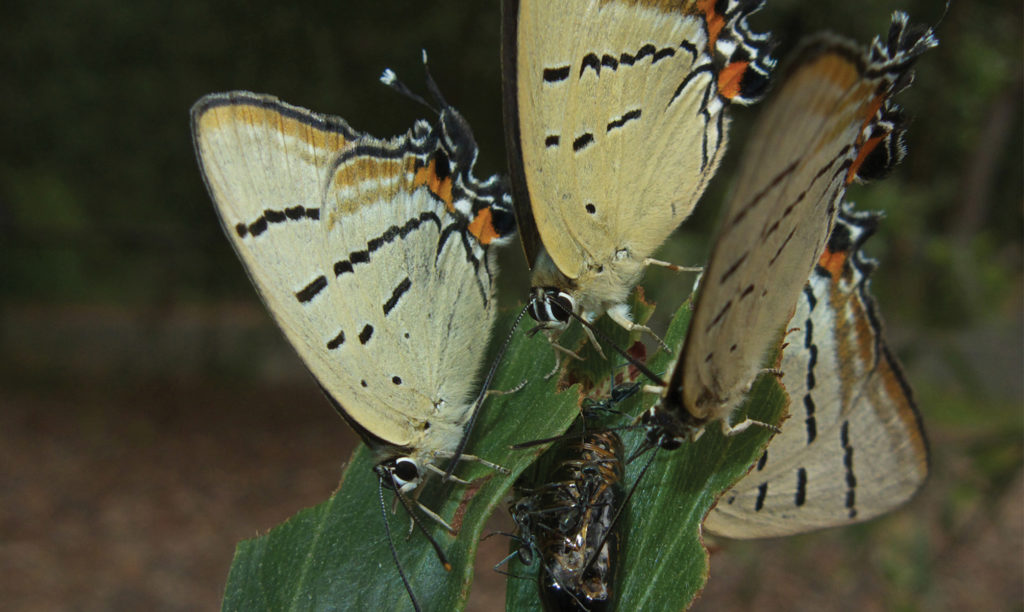
Host plants: Various Acacia species, including Blackwood (A. melanoxylon),Green Wattle(A. irrorata)and Black Wattles (A. concurrens / A. leiocalyx)but must have established populations of the larval attendant antsIridomyrmexspecies.
Habitat: Eucalypt woodland and open forest preferring more open areas where the host plants are regularly found.
Shown:A gathering of adults with a pupa and attendant ants.
Indigo Flash
(Rapala varuna)
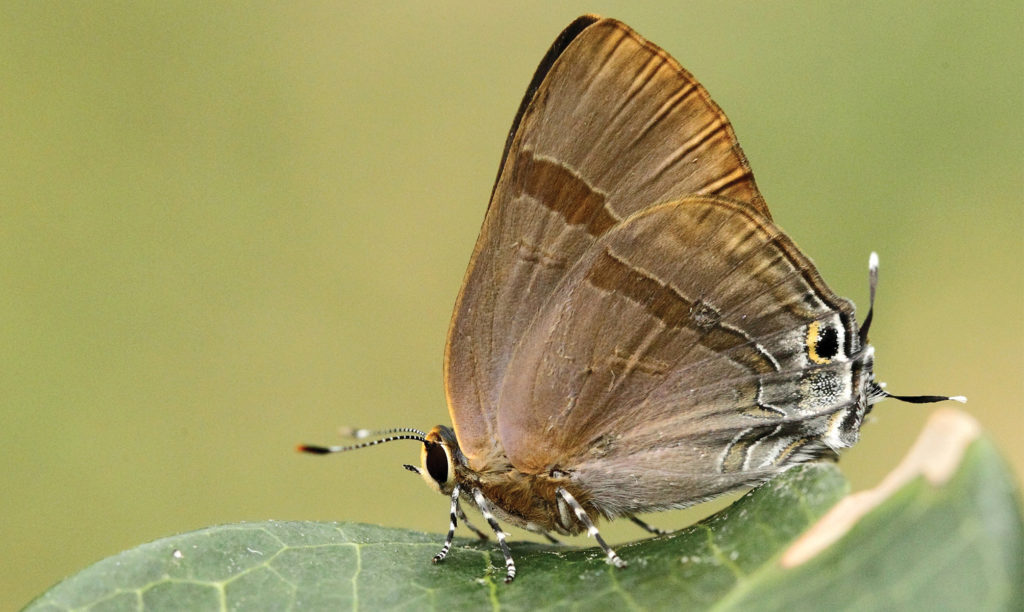
Host plants: Flower buds and flowers of Millaa Millaa Vine(Elaeagnus triflora), Native Mulberry (Pipturusargenteus), Red Ash (Alphitonia excelsa), Foambark(Jagera pseudorhus), Lychee (Litchi chinensis)and the weed Indian Siris (Albizia lebbeck).
Habitat: Wide variety of habitats, wherever the host plants grow.
References
Braby MF (2016) The Complete Field Guide to Butterflies of Australia (2nd ed.). CSIRO Publishing.
Braby MF (2000) Butterflies of Australia: Their Identification, Biology and Distribution. CSIRO Publishing.
Orr A & Kitching R (2011) The Butterflies of Australia. Allen & Unwin.
Moss JT (2013) Butterfly Host Plants of south-east Queensland and northern New South Wales.Butterfly and Other Invertebrates Club.
Article and photographs by Todd Burrows
Conservation Partnerships Officer City of Gold Coast

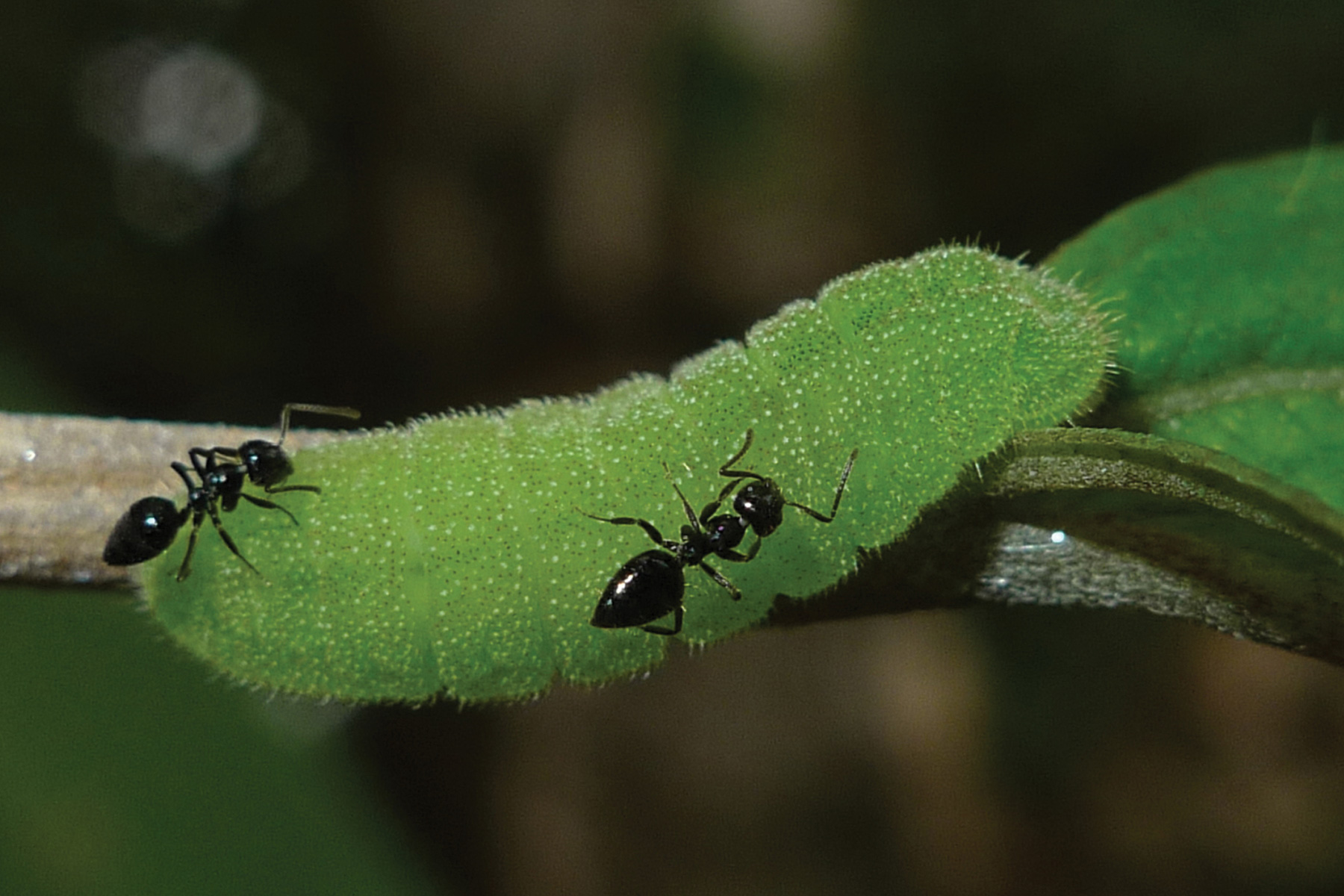
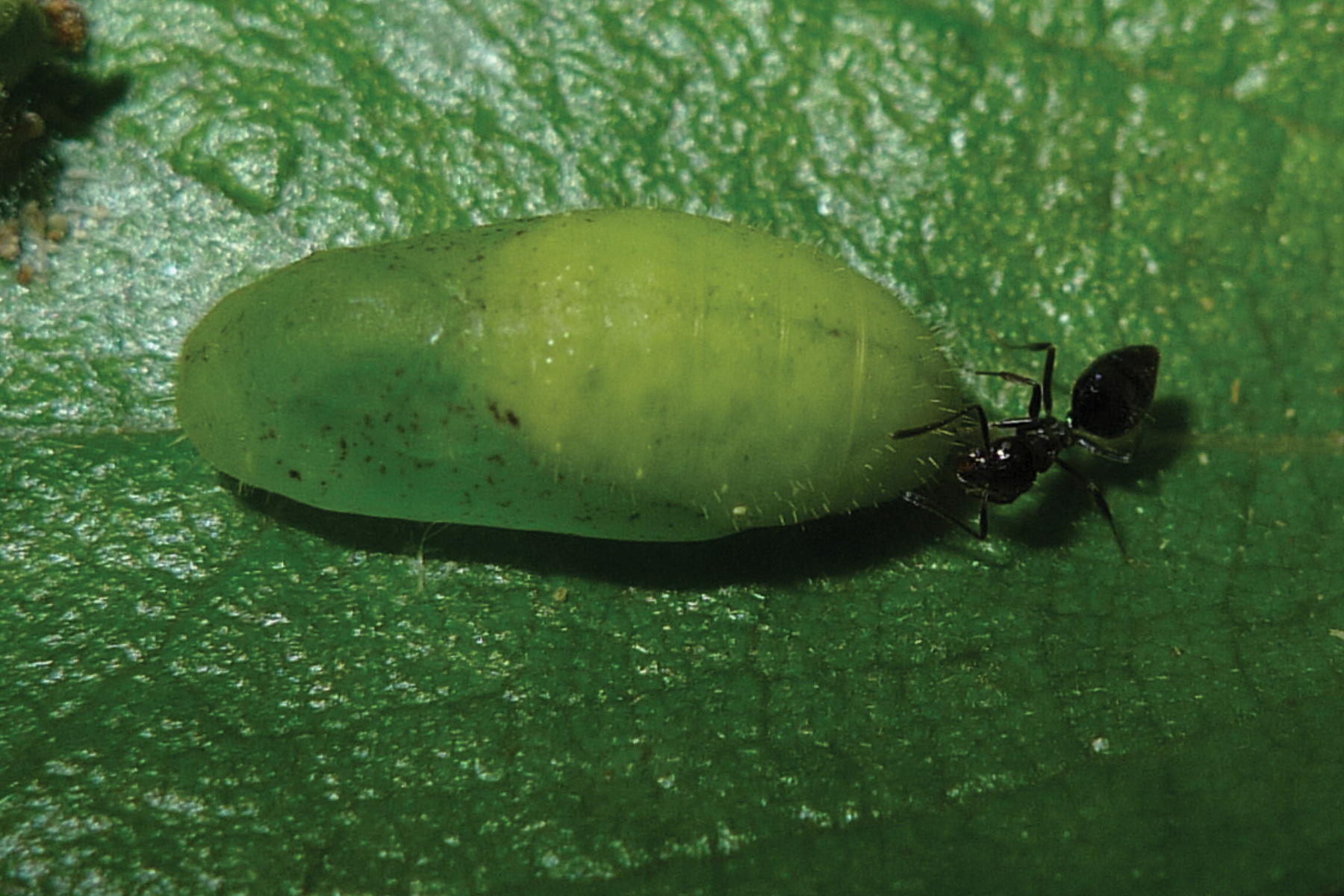
Very interesting read I have a lot of them at the moment in our garden
Hi, I have a question.
The Small Green-banded Blue says that’s it’s host Tree’s/plants are native to America.
Is the Small Green-banded Blue an introduced species of butterfly to South East Queensland?
Cheers!
Hi Tristina. The Small Green-banded Blue, and all blue butterflies in this article, are native to Australia. I’m not sure where it says that the host plants are native to America? Cheers.
Thankyou for this marvellous resource, recently spotting a Baza here at Cracow Qld, and photographing the myriad of Butterflies currently filling the bush and urban areas. Identification can be difficult.
Thank you for the article. I’m always looking to track down more plants that butterflies are attracted to. I’m growing lots of Richmond Birdwing vines & am getting ready to propogate its fruit! Every season we have more pupae & resulting butterflies 🙂